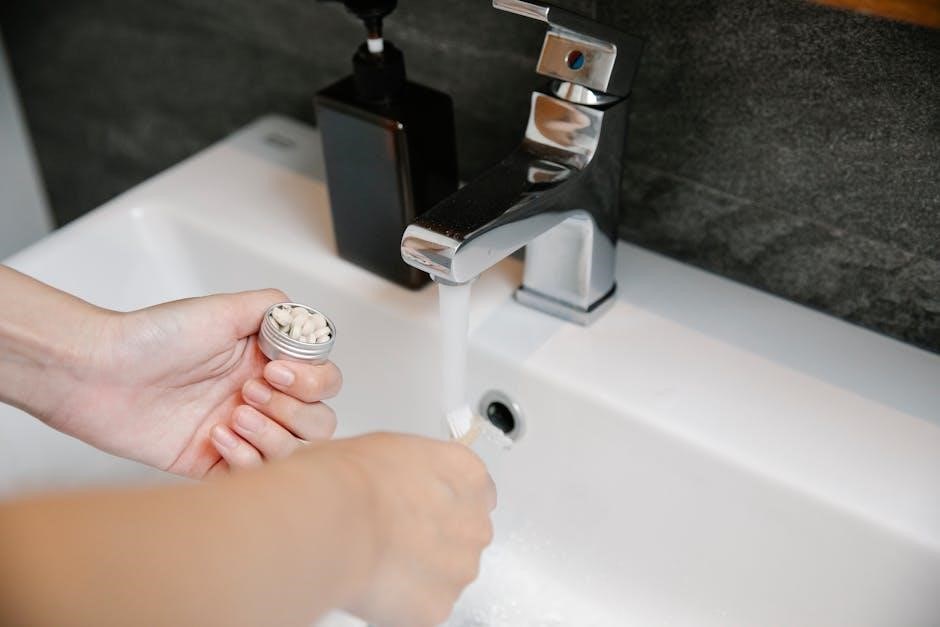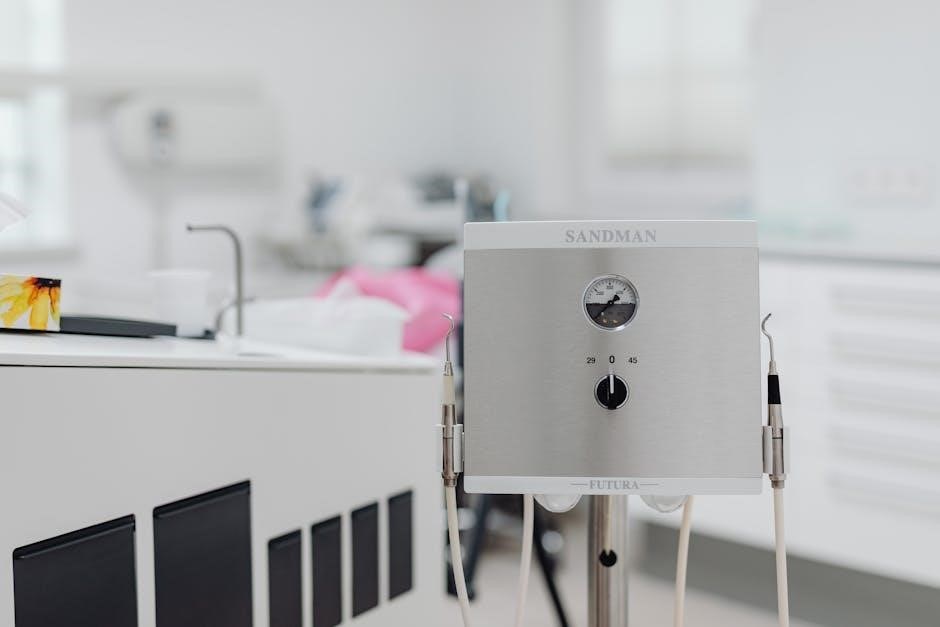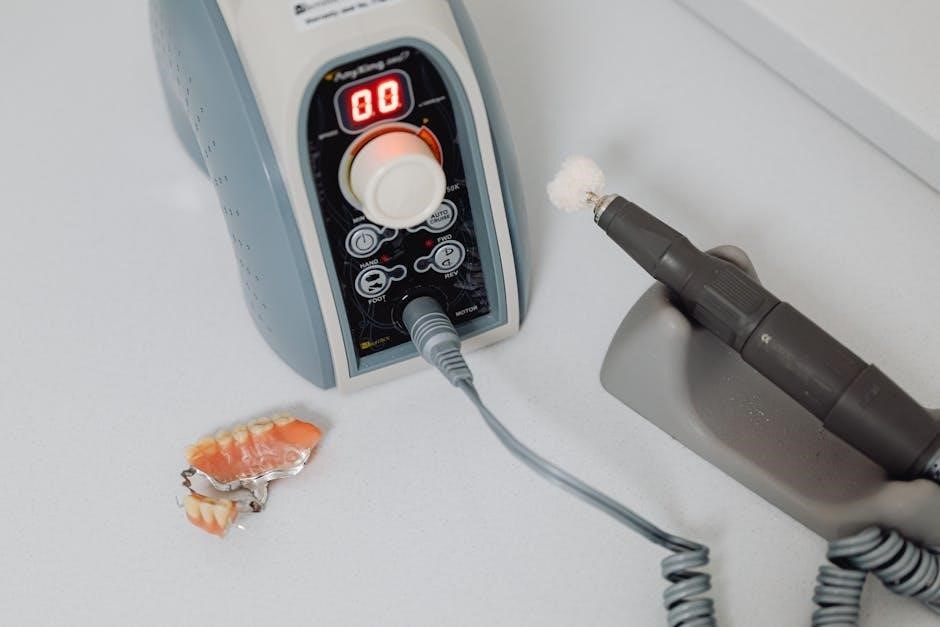Oral hygiene instruction is crucial for maintaining good oral health‚ using short simple sentences to guide patients through procedures like brushing and flossing with a soft toothbrush daily.
Importance of Clear Instructions
Clear instructions are essential for effective oral hygiene‚ as they enable patients to understand and follow proper techniques; Using short‚ simple sentences to guide patients through procedures like brushing and flossing can help prevent confusion and ensure they are performed correctly. This is particularly important for individuals who may be unsure about how to properly care for their teeth and gums. By providing clear instructions‚ patients can develop good oral hygiene habits and reduce their risk of oral health problems. Additionally‚ clear instructions can help patients feel more confident and motivated to maintain their oral health‚ leading to better overall health outcomes. Effective communication is key to successful oral hygiene instruction‚ and clear instructions play a critical role in this process‚ helping patients to establish a consistent and effective oral hygiene routine. Proper instruction can also help to prevent common oral health issues.

Brushing Techniques
Oral hygiene instruction involves using small circular motions with a soft toothbrush to clean teeth effectively daily with fluoride toothpaste.
Brushing Frequency and Duration
Oral hygiene instruction emphasizes the importance of brushing teeth at least twice a day‚ with each session lasting for two minutes to ensure thorough cleaning. This frequency helps maintain good oral health by removing plaque and bacteria that can cause cavities and gum disease. The duration of brushing is also crucial‚ as it allows for adequate time to clean all surfaces of the teeth. Using a soft-bristled toothbrush and fluoride toothpaste‚ individuals should brush their teeth in the morning and before going to bed‚ making sure to cover all areas of the mouth. By following this routine‚ individuals can help prevent oral health issues and maintain a healthy smile. Regular brushing also helps to remove food particles and stains‚ leaving teeth feeling clean and fresh. Overall‚ brushing frequency and duration are essential components of oral hygiene instruction. Proper brushing habits can help individuals maintain good oral health throughout their lives.

Interdental Cleaning
Cleaning between teeth is essential for removing food particles and plaque with interdental brushes or floss daily for good oral hygiene.
Flossing and Interdental Brushes
Flossing and using interdental brushes are essential for removing food particles and plaque from between teeth and under the gumline. This helps to prevent gum disease and promote good oral health.
Using floss or interdental brushes daily can help to remove plaque and bacteria that can cause cavities and gum disease.
It is recommended to use floss or interdental brushes at least once a day‚ preferably before brushing teeth.
Flossing and interdental brushes come in different sizes and types‚ and it is important to choose the right one for your teeth and gums.
Regular use of floss and interdental brushes can help to keep your teeth and gums healthy‚ and prevent oral health problems.
By incorporating flossing and interdental brushes into your oral hygiene routine‚ you can help to maintain good oral health and prevent problems.
It is also important to use the correct technique when flossing or using interdental brushes to ensure that you are removing plaque and bacteria effectively.
Using floss or interdental brushes is an important part of a comprehensive oral hygiene routine.

Additional Tips for Good Oral Hygiene
Visit dentist regularly and clean between teeth daily for optimal oral health benefits always.
Visiting the Dentist and Cleaning Between Teeth
Regular dental visits are essential for maintaining good oral health‚ as they allow dentists to identify and address any potential issues early on. Cleaning between teeth is also crucial‚ as it helps to remove plaque and food particles that can become trapped. Using floss or interdental brushes can help to clean these areas‚ and should be done at least once a day. Additionally‚ visiting the dentist regularly can help to prevent problems such as tooth decay and gum disease. By combining regular dental visits with good oral hygiene habits‚ individuals can help to keep their teeth and mouth healthy. This can also help to prevent bad breath and boost confidence in one’s smile. Overall‚ visiting the dentist and cleaning between teeth are important parts of a good oral hygiene routine. Regular cleaning and check-ups can help to keep the mouth healthy.

Effective Brushing Methods
Using small circular motions with a soft toothbrush is effective for cleaning teeth thoroughly every day.
Brushing After Flossing
Brushing after flossing is a recommended oral hygiene practice‚ as it helps to remove any remaining food particles and plaque from the teeth. This method is considered more effective than brushing before flossing‚ as it allows for a more thorough cleaning of the teeth. By flossing first‚ individuals can remove any large food particles and debris that may be lodged between the teeth‚ and then brush their teeth to remove any remaining plaque and bacteria. Using a soft-bristled toothbrush and fluoride toothpaste‚ individuals can gently brush their teeth in small circular motions‚ making sure to cover all surfaces of the teeth. This technique can help to prevent gum disease and promote overall oral health. Regular brushing and flossing can also help to prevent bad breath and promote a healthy‚ clean smile. Proper oral hygiene techniques are essential for maintaining good oral health.






